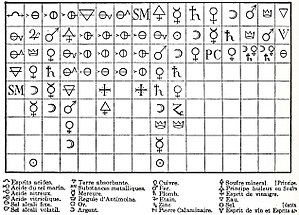
Antoine-Laurent de Lavoisier, also Antoine Lavoisier after the French Revolution, was a French nobleman and chemist who was central to the 18th-century chemical revolution and who had a large influence on both the history of chemistry and the history of biology.
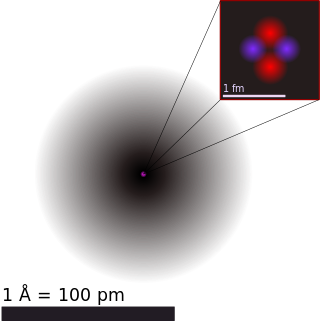
Atomic theory is the scientific theory that matter is composed of particles called atoms. The definition of the word "atom" has changed over the years in response to scientific discoveries. Initially, it referred to a hypothetical concept of there being some fundamental particle of matter, too small to be seen by the naked eye, that could not be divided. Then the definition was refined to being the basic particles of the chemical elements when chemists observed that the elements seemed to combine with each other by a basic quantity. Then physicists discovered that these particles had an internal structure of their own and therefore perhaps did not deserve to be called "atoms", but renaming atoms would have been impractical by that point.
Chemistry is the scientific study of the properties and behavior of matter. It is a physical science within the natural sciences that studies the chemical elements that make up matter and compounds made of atoms, molecules and ions: their composition, structure, properties, behavior and the changes they undergo during reactions with other substances. Chemistry also addresses the nature of chemical bonds in chemical compounds.

Claude Louis Berthollet was a Savoyard-French chemist who became vice president of the French Senate in 1804. He is known for his scientific contributions to theory of chemical equilibria via the mechanism of reverse chemical reactions, and for his contribution to modern chemical nomenclature. On a practical basis, Berthollet was the first to demonstrate the bleaching action of chlorine gas, and was first to develop a solution of sodium hypochlorite as a modern bleaching agent.
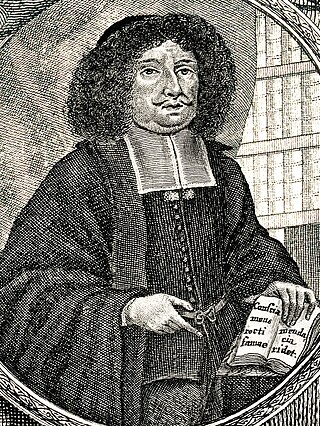
The phlogiston theory, a superseded scientific theory, postulated the existence of a fire-like element dubbed phlogiston contained within combustible bodies and released during combustion. The name comes from the Ancient Greek φλογιστόνphlogistón, from φλόξphlóx (flame). The idea of a phlogistic substance was first proposed in 1667 by Johann Joachim Becher and later put together more formally in 1703 by Georg Ernst Stahl. Phlogiston theory attempted to explain chemical processes such as combustion and rusting, now collectively known as oxidation. The theory was challenged by the concomitant weight increase and was abandoned before the end of the 18th century following experiments by Antoine Lavoisier in the 1770s and by other scientists. Phlogiston theory led to experiments that ultimately resulted in the identification and naming (1777) of oxygen by Joseph Priestley.
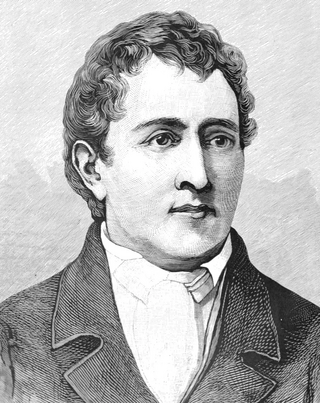
Carl Wilhelm Scheele was a Swedish German pharmaceutical chemist.

Chemical symbols are the abbreviations used in chemistry, mainly for chemical elements; but also for functional groups, chemical compounds, and other entities. Element symbols for chemical elements normally consist of one or two letters from the Latin alphabet and are written with the first letter capitalised.

Antoine François Fourcroy was a French chemist and a contemporary of Antoine Lavoisier. Fourcroy collaborated with Lavoisier, Guyton de Morveau, and Claude Berthollet on the Méthode de nomenclature chimique, a work that helped standardize chemical nomenclature.
The caloric theory is an obsolete scientific theory that heat consists of a self-repellent fluid called caloric that flows from hotter bodies to colder bodies. Caloric was also thought of as a weightless gas that could pass in and out of pores in solids and liquids. The "caloric theory" was superseded by the mid-19th century in favor of the mechanical theory of heat, but nevertheless persisted in some scientific literature—particularly in more popular treatments—until the end of the 19th century.

In chemistry, the amount of substance (symbol n) in a given sample of matter is defined as a ratio (n = N/NA) between the number of elementary entities (N) and the Avogadro constant (NA). The entities are usually molecules, atoms, or ions of a specified kind. The particular substance sampled may be specified using a subscript, e.g., the amount of sodium chloride (NaCl) would be denoted as nNaCl. The unit of amount of substance in the International System of Units is the mole (symbol: mol), a base unit. Since 2019, the value of the Avogadro constant NA is defined to be exactly 6.02214076×1023 mol−1. Sometimes, the amount of substance is referred to as the chemical amount or, informally, as the "number of moles" in a given sample of matter.

The history of chemistry represents a time span from ancient history to the present. By 1000 BC, civilizations used technologies that would eventually form the basis of the various branches of chemistry. Examples include the discovery of fire, extracting metals from ores, making pottery and glazes, fermenting beer and wine, extracting chemicals from plants for medicine and perfume, rendering fat into soap, making glass, and making alloys like bronze.
Chemical nomenclature is a set of rules to generate systematic names for chemical compounds. The nomenclature used most frequently worldwide is the one created and developed by the International Union of Pure and Applied Chemistry (IUPAC).

Marie-Anne Pierrette Paulze Lavoisier, later Countess von Rumford, was a French chemist and noblewoman. Madame Lavoisier's first husband was the chemist and nobleman Antoine Lavoisier. She acted as his laboratory companion, using her linguistic skills to write up his work and bring it to an international audience. She also played a pivotal role in the translation of several scientific works, and was instrumental to the standardization of the scientific method.
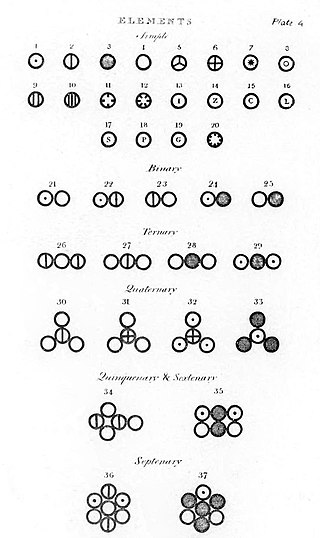
This timeline of chemistry lists important works, discoveries, ideas, inventions, and experiments that significantly changed humanity's understanding of the modern science known as chemistry, defined as the scientific study of the composition of matter and of its interactions.

In the history of science, pneumatic chemistry is an area of scientific research of the seventeenth, eighteenth, and early nineteenth centuries. Important goals of this work were the understanding of the physical properties of gases and how they relate to chemical reactions and, ultimately, the composition of matter. The rise of phlogiston theory, and its replacement by a new theory after the discovery of oxygen as a gaseous component of the Earth atmosphere and a chemical reagent participating in the combustion reactions, were addressed in the era of pneumatic chemistry.

Baron Jöns Jacob Berzelius (Swedish:[jœnsˈjɑ̌ːkɔbbæˈʂěːlɪɵs] was a Swedish chemist. In general, he is considered the last person to know the whole field of chemistry. Berzelius is considered, along with Robert Boyle, John Dalton, and Antoine Lavoisier, to be one of the founders of modern chemistry. Berzelius became a member of the Royal Swedish Academy of Sciences in 1808 and served from 1818 as its principal functionary. He is known in Sweden as the "Father of Swedish Chemistry". During his lifetime he did not customarily use his first given name, and was universally known simply as Jacob Berzelius.
Chemistry: A Volatile History is a 2010 BBC documentary on the history of chemistry presented by Jim Al-Khalili. It was nominated for the 2010 British Academy Television Awards in the category Specialist Factual.
The origin and usage of the term metalloid is convoluted. Its origin lies in attempts, dating from antiquity, to describe metals and to distinguish between typical and less typical forms. It was first applied to metals that floated on water, and then more popularly to nonmetals. Only recently, since the mid-20th century, has it been widely used to refer to elements with intermediate or borderline properties between metals and nonmetals.

Claudine Picardet was a chemist, mineralogist, meteorologist and scientific translator. Among the French chemists of the late eighteenth century she stands out for her extensive translations of scientific literature from Swedish, English, German and Italian to French. She translated three books and thousands of pages of scientific papers, which were published as well as circulated in manuscript form. She hosted renowned scientific and literary salons in Dijon and Paris, and was an active participant in the collection of meteorological data. She helped to establish Dijon and Paris as scientific centers, substantially contributing to the spread of scientific knowledge during a critical period in the chemical revolution.
